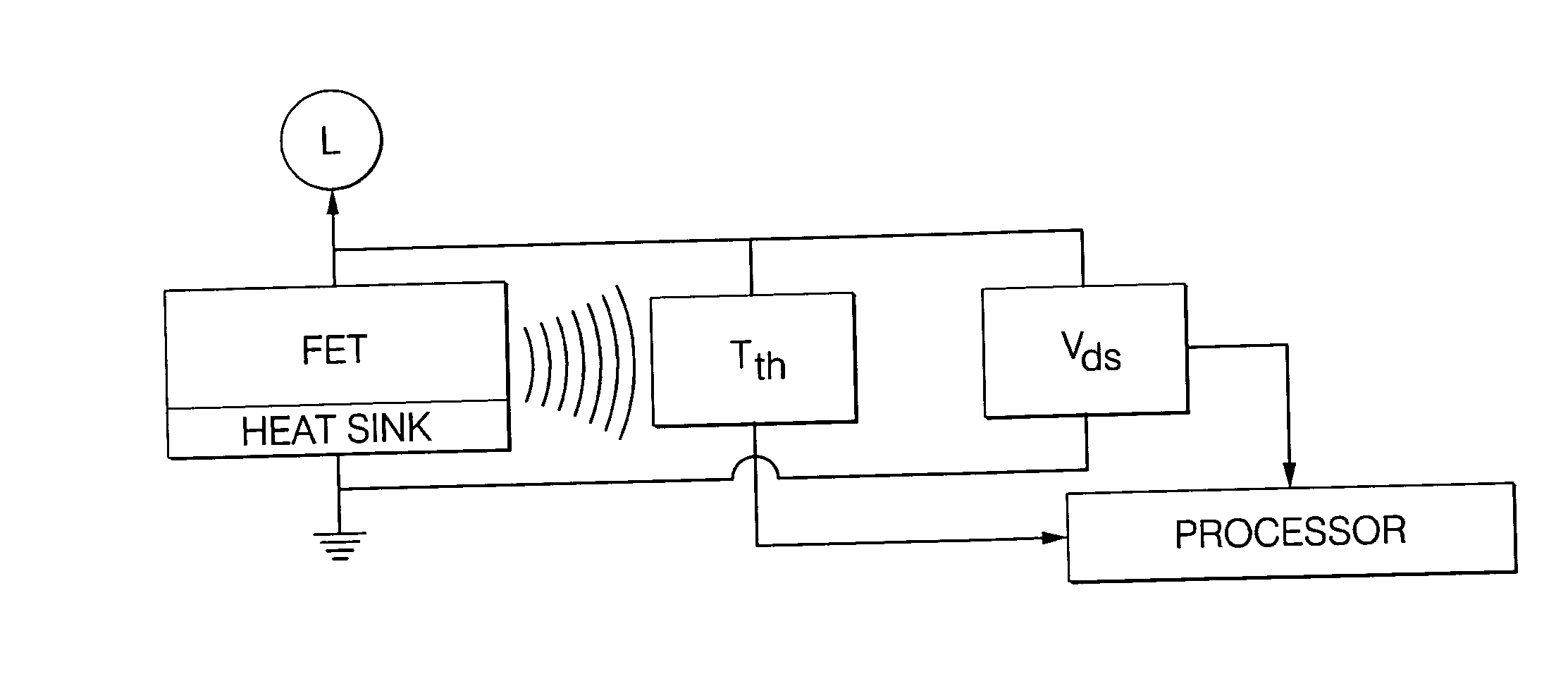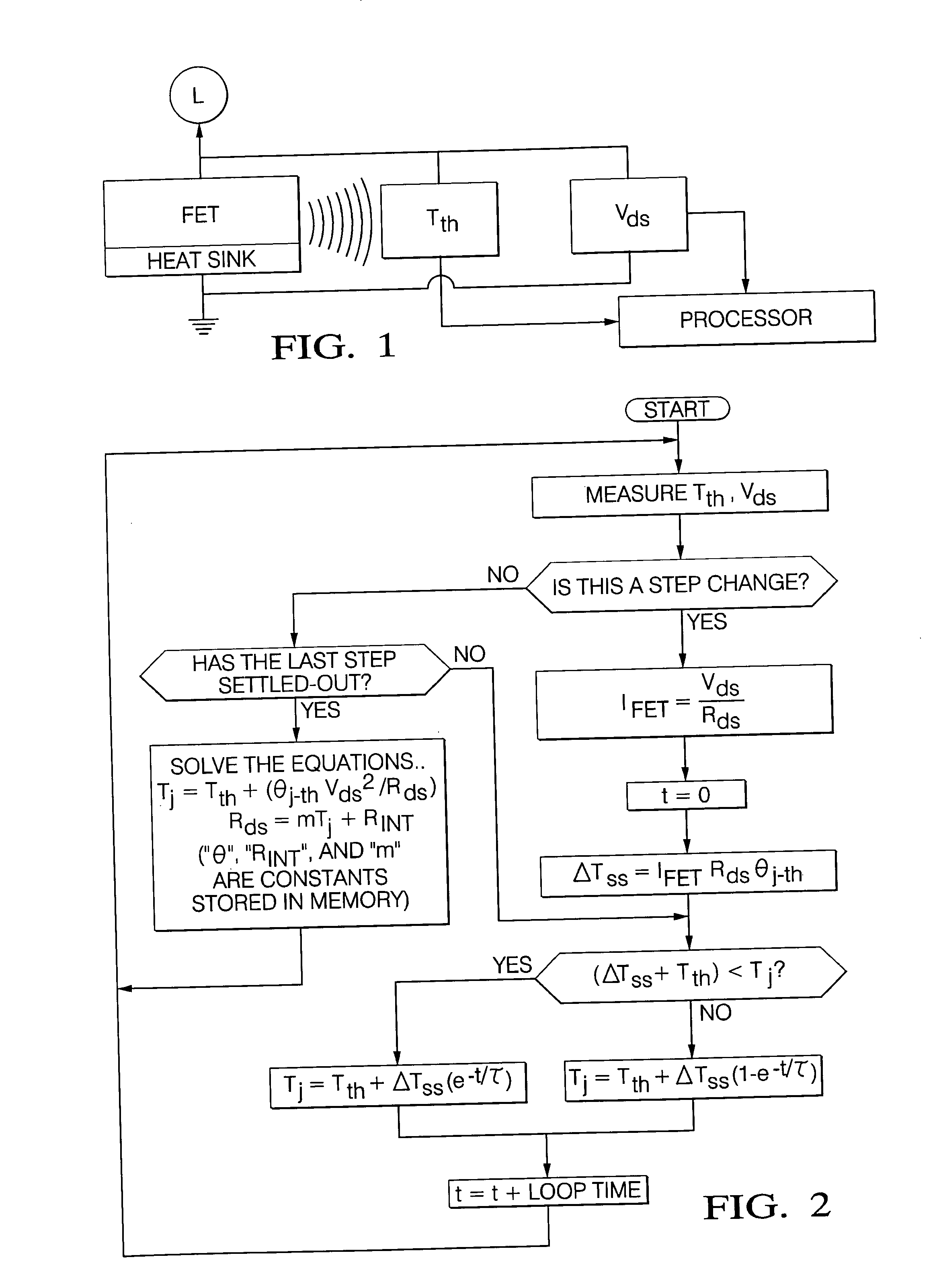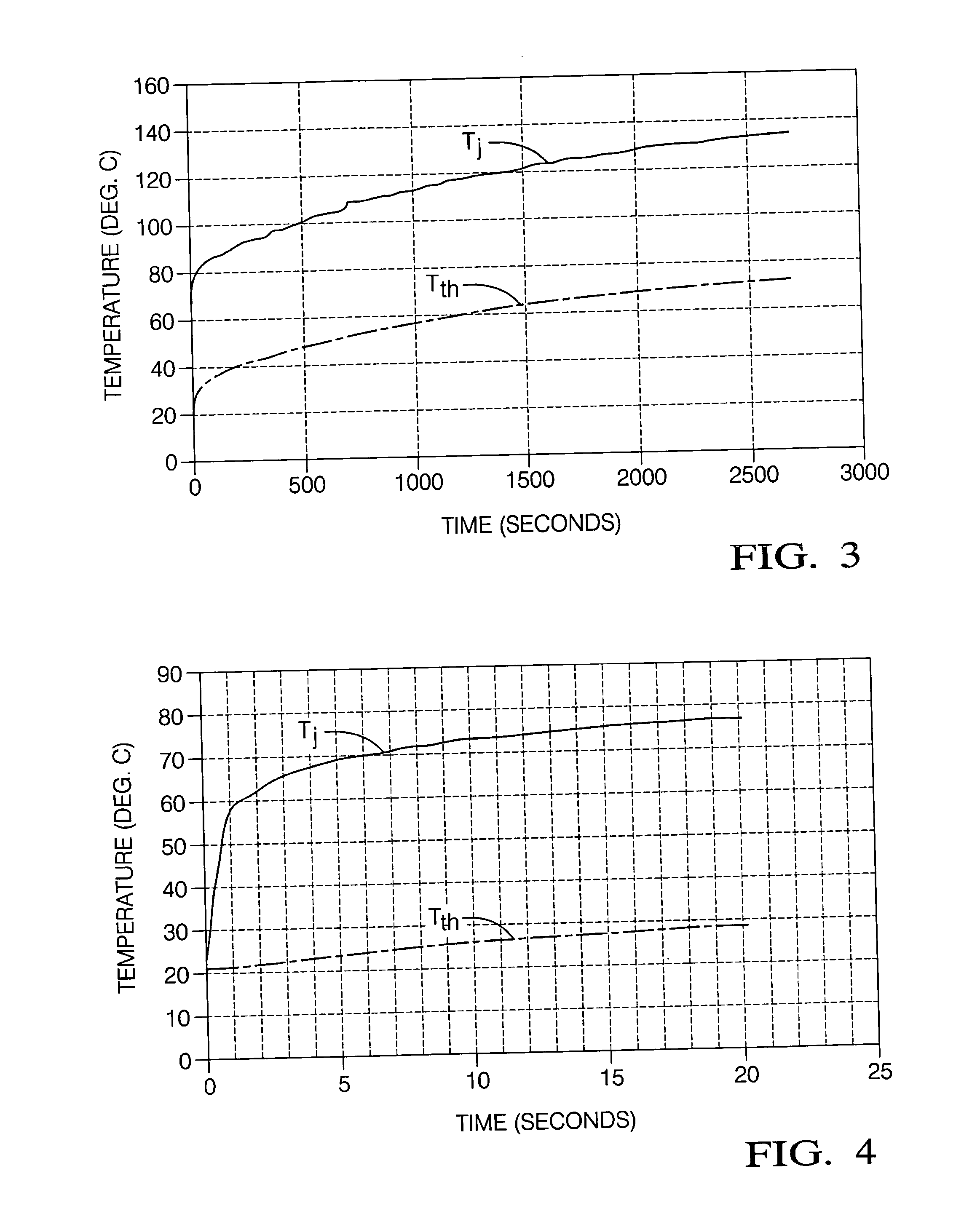Method of determining FET junction temperature
a temperature and junction technology, applied in the direction of resistance/reactance/impedence, instruments, heat measurement, etc., can solve the problems of difficult to determine the real time current and power of an fet, and difficult to measure the temperature at the junction (tsub>j/sub>) of the fet directly
- Summary
- Abstract
- Description
- Claims
- Application Information
AI Technical Summary
Benefits of technology
Problems solved by technology
Method used
Image
Examples
Embodiment Construction
[0014] Referring to the FIG. 1, a system for determining the current through a field effect transistor (FET) is illustrated. In a power control system, the field-effect transistor (FET) functions as a switch to control power to a load (L). A thermsistor is mounted in close thermal proximity to the FET for measuring or inferring the temperature Tth adjacent the junction of the FET. The mechanical packaging of the FET would include a heat sink for dissipating heat generated by the FET. Also included is a voltage meter (VDS) and appropriate circuitry for measuring the drain-to-source voltage (VDS) of the FET.
[0015] The system is distinguished by a processor or digital core responsive to Tth and VDS and for storing characteristics of the FET and a thermal model of the system hardware for determining the temperature TJ at the junction of the FET in a stable region of operation where TJ−Tth is nearly constant accordance with a first set of equations. The processor is further responsive t...
PUM
 Login to View More
Login to View More Abstract
Description
Claims
Application Information
 Login to View More
Login to View More - R&D
- Intellectual Property
- Life Sciences
- Materials
- Tech Scout
- Unparalleled Data Quality
- Higher Quality Content
- 60% Fewer Hallucinations
Browse by: Latest US Patents, China's latest patents, Technical Efficacy Thesaurus, Application Domain, Technology Topic, Popular Technical Reports.
© 2025 PatSnap. All rights reserved.Legal|Privacy policy|Modern Slavery Act Transparency Statement|Sitemap|About US| Contact US: help@patsnap.com



